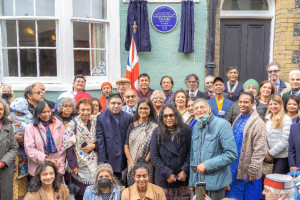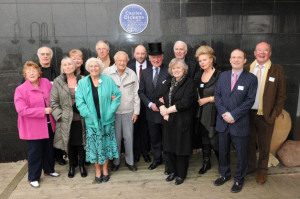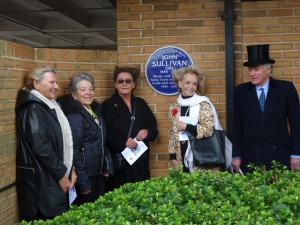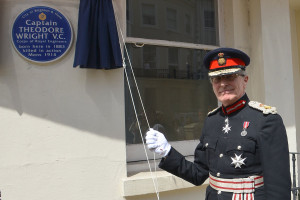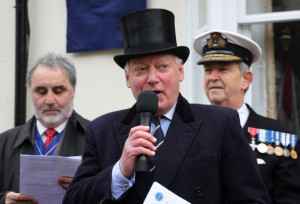2023 marks the centenary of the Brighton & Hove Blue Plaque Panel, with more plaques planned to be unveiled as part of the celebrations, adding to the existing 160. The Panel has continuously operated for a hundred years, and it is believed, apart from London, to be the oldest in the world. HB&P takes a look at the Panel and its history.
The Panel started when the Brighton Corporation set up a plaque committee to commemorate famous people who had lived and stayed in Brighton. It took two years to decide on which five names would be initially commemorated, and in November 1925 the first five Portland stone plaques were unveiled to William IV and Queen Adelaide, Gideon Mantell, Maria Fitzherbert, Herbert Spencer, and Charles Dickens, the latter of which on the Bedford Hotel where he wrote Dombey and Son.
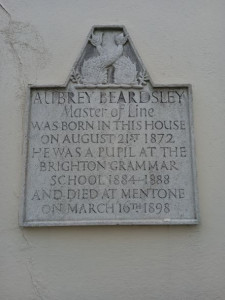
The commissioned artist and stone mason for the initial plaques was Eric Gill from Ditchling, and it was Gill’s style that was used for the next series of plaques, which included William Gladstone and Audrey Beardsley, amongst others.
An additional porcelain plaque to Sir Roland Hill at 11 Hanover Crescent was erected privately, and it is believed its fitting predates 1923.
After the Second World War, Hove Corporation set up its own committee, and one of the first plaques they unveiled was a rectangular, cream plaque to Winston Churchill at his old preparatory school. This was followed by Admiral Westphal, Sir C. Aubrey Smith, Robert Bevan, and Roger Quilter, all blue glazed roundels. During the 1950s to the 1970s, the Regency Society had its own scheme running, commemorating Thomas Read Kemp, Prince Metternick, and Anthony Dale, amongst others, in sandstone.
Later, Brighton erected further plaques in Westmoreland green slate, as the Eric Gill stone variants were not weathering well in the sea air. These were to John Saxby, Ray Noble, Prince Maurice de Talleyrand, and Harriot Mellon, amongst others, but this style has proven illegible from a distance.
Following Brighton and Hove becoming a unitary authority and city, it was decided to amalgamate all three schemes into the Bright and Hove Commemorative Plaque Panel. The Panel is now fully constituted, having annual elections for its twelve members.
It was quickly decided that all future plaques would be similar to the English Heritage style, blue glazed and 18 inches in diameter. The Panel is encouraging the existing stone and slate version to be replaced with the handmade blue roundels. The Panel now meets quarterly and erects two to three plaques a year, and has a nomination section for historical events, the plaques for which are rectangular or square.
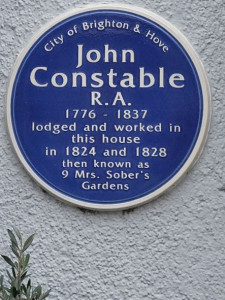
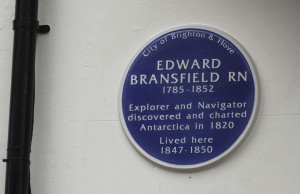
Recent unveilings have included plaques for John Constable, Harriot Mellon, Edward Bransfield, Rabindranath Tagore, a replacement stone for Charles Dickens, John Sullivan, and Prince Petr Kropotkin, amongst others.
Three forthcoming plaques this year will be for the film Quadrophenia, Richard Nibbs and a replacement blue glazed plaque in place of a stone item for Thomas Read Kemp.
Thanks to Roger Amerena, the current Panel Chair, for his insights and provided images.
